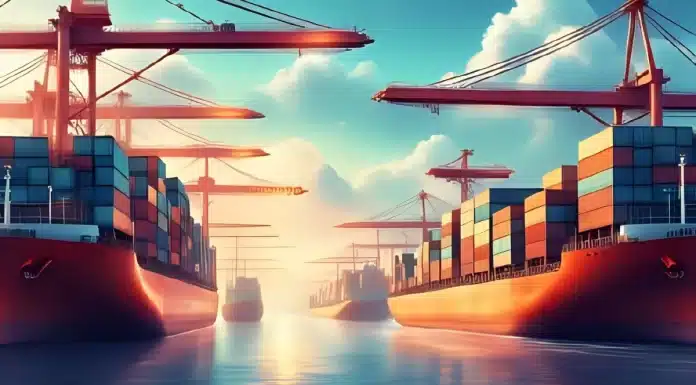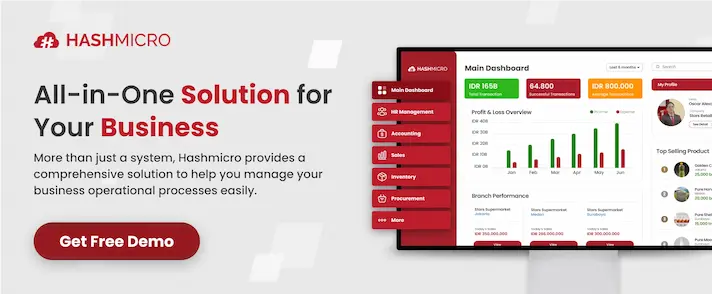Freight forwarding is the backbone of international trade ensuring goods move efficiently, safely, and on time across borders. At its core, it’s a logistics service that manages the coordination and shipment of cargo utilizing a combination of air, sea, rail, and road transport.
In 2024, the global freight forwarding market was valued at approximately USD 192.44 billion, according to OpenPR. This growth is fueled by the rise of e-commerce and increasingly complex global supply chains, pushing businesses to seek greater reliability in logistics.
To help businesses streamline freight operations, HashMicro offers a powerful Fleet Management System that supports logistics companies in tracking shipments, optimizing delivery routes, managing vehicle maintenance, and ensuring cost efficiency all in real time.
Want to understand how freight forwarding really works? In this article, we’ll explore what it is, how the process works, and why it plays a crucial role in global trade today.
Key Takeaways
|
What is Freight Forwarding?
Freight forwarding is the process of managing the shipment of goods from one place to another, especially across borders. It works by coordinating transportation, documentation, and customs to ensure goods arrive safely and on time.
This process also includes handling documentation, insurance, customs clearance, and warehousing when necessary. While the logistics behind global shipping can be complex, businesses often rely on a freight forwarder to manage the entire process.
A freight forwarder acts as a logistics partner that oversees each stage of the shipment, helping clients navigate regulations, minimize delays, and streamline the overall movement of goods.
What Does a Freight Forwarder Do?
A freight forwarder serves as a logistics intermediary, handling the coordination and execution of shipping goods on behalf of businesses. Their main role is to ensure that cargo moves smoothly from origin to destination, even when multiple modes of transportation and international borders are involved.
Some of the key responsibilities of a freight forwarder include:
- Booking transportation with airlines, shipping lines, or trucking companies
- Preparing shipping documents such as bills of lading, commercial invoices, and certificates of origin
- Managing customs clearance, including handling duties, taxes, and compliance with import/export regulations
- Consolidating shipments to reduce shipping costs and improve efficiency
- Tracking cargo and providing updates to clients throughout the journey
- Coordinating warehousing and storage when needed
Freight forwarders don’t typically own transport assets like ships or trucks; they focus on expertise, relationships with carriers, and the ability to troubleshoot delays or disruptions. For businesses navigating international trade, freight forwarders offer both convenience and cost-saving advantages.
What are the Key Stages of Freight Forwarding?
Freight forwarding consists of several steps to ensure goods are shipped safely, legally, and on time. Each stage helps prevent delays and ensures compliance with international regulations. The key stages include:
1. Export haulage
The cargo is transported from the shipper’s location (e.g., warehouse or factory) to the freight forwarder’s facility or consolidation center. This usually involves local trucking services.
2. Export customs clearance
Before leaving the country of origin, the goods must pass customs clearance. The freight forwarder arranges documentation and works with customs agents to ensure all legal export requirements are met.
3. Origin handling
Once cleared, the goods are inspected, sorted, labeled, and prepared for international transport. This includes checking documentation, packing, and loading into containers or onto pallets.
4. Transportation (Main leg)
This is the main journey by sea, air, rail, or road, where goods are moved from the origin country to the destination country.
5. Import customs clearance
Upon arrival, the freight forwarder handles customs procedures for the importing country, including taxes, duties, and compliance with local import regulations.
6. Destination Handling
After clearance, the cargo is unloaded, inspected, and sorted at the destination port or terminal. This stage includes managing paperwork and preparing the goods for final delivery.
7. Import haulage
The goods are delivered from the port or terminal to the final consignee, such as a distribution center, retailer, or customer location.
Each of these stages requires careful coordination, accurate documentation, and constant communication. Freight forwarders manage these steps to reduce risk, control costs, and keep shipments on schedule.
To support this complex workflow, many logistics companies rely on fleet management systems to gain real-time visibility over vehicle movements, automate delivery scheduling, monitor driver performance, and ensure timely maintenance.
Benefits of Freight Forwarding?
Freight forwarding provides practical advantages for businesses that move goods across regions or countries. With the help of experienced freight forwarders, companies can streamline logistics while reducing risks and costs. Here are four key benefits:
1. Expert handling of international shipping
Freight forwarders are familiar with customs regulations, trade agreements, and export-import documentation. This reduces the chances of costly errors, delays, or shipment holds during cross-border transport.
2. Cost savings through consolidation and negotiation
By consolidating multiple shipments and leveraging relationships with carriers, freight forwarders can secure better shipping rates and reduce overall logistics costs especially for businesses that don’t ship in bulk.
3. End-to-end coordination for efficiency
Freight forwarders manage everything from pickup to delivery, including warehousing, customs, and last-mile transport. This streamlines operations and frees up internal resources to focus on business growth.
4. Risk reduction and problem-solving
Experienced forwarders can anticipate and solve common shipping issues such as route changes, customs delays, or documentation gaps. They also offer cargo insurance options to protect against loss or damage.
Conclusion
Freight forwarding is a vital part of global logistics that ensures goods are shipped safely, efficiently, and in compliance with international standards. From managing documentation to coordinating transport and customs, freight forwarders play a key role in keeping supply chains running smoothly.
As the complexity of shipments grows, having the right system in place becomes increasingly important. A digital solution like Fleet Management Software from HashMicro can help logistics companies track deliveries, optimize routes, and reduce operational costs all in one platform.
Ready to simplify your freight operations? Request a free demo today and see how HashMicro can support your logistics efficiency and business growth.
FAQ About Freight forwarding
-
What is a freight forwarding role?
A freight forwarder acts as a middleman, arranging the transportation of goods for clients. Their main responsibility is to ensure the smooth movement of cargo from origin to destination by managing all logistical and administrative tasks along the way.
-
What is freight forwarding vs. logistics?
Logistics encompasses a range of functions, including warehousing, inventory management, and distribution. In contrast, freight forwarding focuses specifically on shipment-related tasks, including handling documentation, selecting carriers, and managing customs procedures.
-
What is an example of freight forwarding?
The freight forwarder manages all necessary documents to ensure the products reach their final destination in the U.S. The process starts with transporting the goods by truck from the factory to an airport in Japan, followed by air shipment to New York.

































